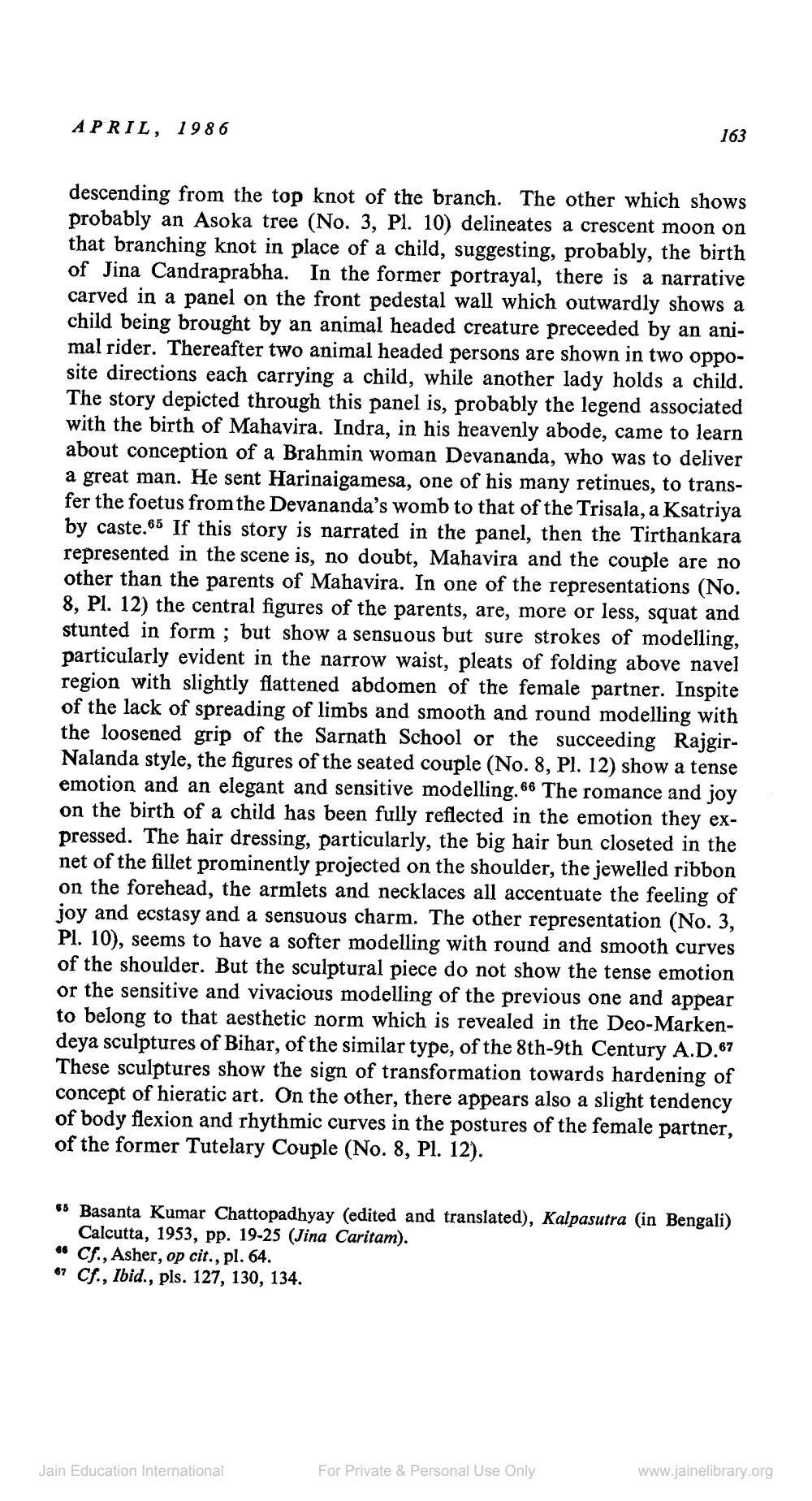________________
APRIL, 1986
163
descending from the top knot of the branch. The other which shows probably an Asoka tree (No. 3, Pl. 10) delineates a crescent moon on that branching knot in place of a child, suggesting, probably, the birth of Jina Candraprabha. In the former portrayal, there is a narrative carved in a panel on the front pedestal wall which outwardly shows a child being brought by an animal headed creature preceeded by an animal rider. Thereafter two animal headed persons are shown in two opposite directions each carrying a child, while another lady holds a child. The story depicted through this panel is, probably the legend associated with the birth of Mahavira. Indra, in his heavenly abode, came to learn about conception of a Brahmin woman Devananda, who was to deliver a great man. He sent Harinaigamesa, one of his many retinues, to transfer the foetus from the Devananda's womb to that of the Trisala, a Ksatriya by caste.65 If this story is narrated in the panel, then the Tirthankara represented in the scene is, no doubt, Mahavira and the couple are no other than the parents of Mahavira. In one of the representations (No. 8, Pl. 12) the central figures of the parents, are, more or less, squat and stunted in form ; but show a sensuous but sure strokes of modelling, particularly evident in the narrow waist, pleats of folding above navel region with slightly flattened abdomen of the female partner. Inspite of the lack of spreading of limbs and smooth and round modelling with the loosened grip of the Sarnath School or the succeeding RajgirNalanda style, the figures of the seated couple (No. 8, Pl. 12) show a tense emotion and an elegant and sensitive modelling.66 The romance and joy on the birth of a child has been fully reflected in the emotion they expressed. The hair dressing, particularly, the big hair bun closeted in the net of the fillet prominently projected on the shoulder, the jewelled ribbon on the forehead, the armlets and necklaces all accentuate the feeling of joy and ecstasy and a sensuous charm. The other representation (No. 3, Pl. 10), seems to have a softer modelling with round and smooth curves of the shoulder. But the sculptural piece do not show the tense emotion or the sensitive and vivacious modelling of the previous one and appear to belong to that aesthetic norm which is revealed in the Deo-Markendeya sculptures of Bihar, of the similar type, of the 8th 9th Century A.D.67 These sculptures show the sign of transformation towards hardening of concept of hieratic art. On the other, there appears also a slight tendency of body flexion and rhythmic curves in the postures of the female partner, of the former Tutelary Couple (No. 8, Pl. 12).
65 Basanta Kumar Chattopadhyay (edited and translated), Kalpasutra (in Bengali)
Calcutta, 1953, pp. 19-25 (Jina Caritam). ** Cf., Asher, op cit., pl. 64. 67 Cf., Ibid., pls. 127, 130, 134.
For Private & Personal Use Only
Jain Education International
www.jainelibrary.org




